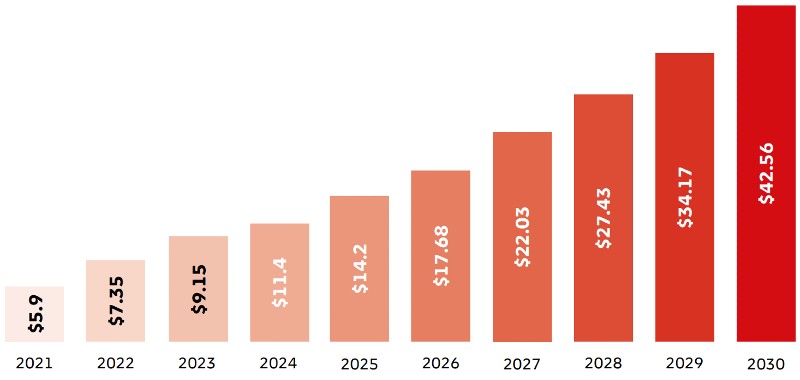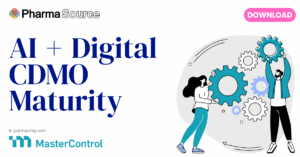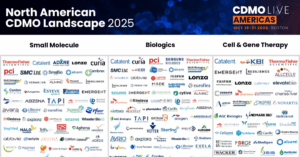The pharmaceutical supply chain is undergoing major change, driven by advances in science, technology, and evolving patient expectations.
To keep up will require fresh approaches to supply chain logistics, says Fernanda Teles, Head of Global Clinical Logistics for DHL Supply Chain. In the latest PharmaSource Podcast she explains some of the key trends from their recent report Delivering Next-Level Healthcare, and shares advice on how supply chain leaders must adapt.
Patient-Centric Models
Patients today expect healthcare tailored to their needs and lifestyles, including more control and convenience. This is driving rapid growth in direct-to-patient distribution models that deliver medications straight to the home rather than via traditional channels.
The home healthcare model will require tight coordination between clinical, retail, and logistics operations. Supply chains must adapt to serve diverse end-users via new channels while maintaining quality and security. Compliance is critical: supply chains must verify patients’ identity, prescription validity, and handle any controlled substances securely.
“Patient centricity is about making the medicines available to everyone at the right time.” says Fernanda.
“It’s changing the world. You need to make life-saving medicines available to everyone, anywhere, at anytime. It’s making us develop new solutions, new coverage and new ways of working.”

Biopharmaceuticals driving cold chain network growth
Biopharmaceuticals already make up over 30% of the total pharma market. This share is forecast to reach 41% by 2028, requiring strict temperature control from production through final delivery to maintain stability. As volumes increase, supply chains will need expanded and upgraded cold chain capabilities.
Managing end-to-end quality control and regulatory compliance across complex global networks presents both technical and organizational challenges including:
- Logistics facilities and assets like warehouses, trucks and air freight containers will need capability upgrades to handle cryogenic shipments at temperatures as low as -196°.
- Packaging and instrumentation for monitoring and control during transport will require investment.
- Distribution networks must be able to handle smaller, fluctuating volumes of high-value personalised medicine shipments and reach challenging destinations on short notice.
- To protect product integrity, supply chain personnel must be trained on technical requirements like shipment preconditioning and re-icing. They will also need skills for white-glove final mile delivery and interacting with clinical professionals in healthcare settings.
Cell and gene therapy forecasst market size, 2021 to 2030 (US $ billion)

Supply chain digitisation
Digital technology has potential to deliver far greater efficiency and transparency across the supply chain.
- Advanced analytics and artificial intelligence have huge potential to optimise planning, forecasting, and delivery performance.
- Smart sensors and trackers provide real-time visibility into the location and condition of pharmaceutical shipments.
- Dynamic inventory management leverages connected signals across production, logistics, and point of use to match supply with demand.
But realising the potential of end-to-end digitization requires overcoming data silos. Companies must invest in shared platforms, standards, and governance so digital information can flow smoothly across clinical, retail, logistics, and financial systems.
To make that happen will require collaboration between the different players across the globe.
“Simplifying standardising connectivity and data management will be really crucial to have the full analytics, and end to end supply chain visibility.” says Fernanda.
Perhaps for the first time, the pharmaceutical industry is under pressure to reduce costs.
“The pharma industry was not under a lot of cost pressure. We still had reasonable margins in the market, we still had blockbuster launches of innovative products to the market.”
“But that’s changing, and that’s good news because now the industry has become more focused on costs, it is figuring out how to optimise financial or human resources. Connecting the whole globe under a global network will be a game-changer for the future, without doubt.”

Sustainable Supply Chains
The pharma industry is committed the reduce its environmental impact as part of corporate social responsibility initiatives, with two major areas of focus:
- Packaging alone accounts for half the healthcare sector’s plastic waste – up to 150 million tonnes per year globally. Heavy investment is needed in reusable and recyclable materials and in redesigning products to eliminate non-essential packaging. Digital tools will enable closed-loop reuse and refill programs by tracking assets across supply cycles.
- Transportation accounts for up to one-third of supply chain emissions. Optimising network routes, maximising load utilisation, shifting freight to rails and barges, and adopting zero-emission electric vehicles can drive measurable cuts. So can collaboration across manufacturers to combine shipments.
Understanding how to “‘connect the dots”‘ across the supply chain and optimise the network will help the the sustainability agenda, says Fernanda
“The amount of waste is just tremendous. Life Sciences and Healthcare is responsible for a much bigger carbon emissions than the automotive industry. I think we can do better.” she says.
The importance of people and technology
To step up to these challenges, supply chain leaders should be prepared to challenge the status quo.
Life Sciences a is a “very traditional industry with very strong mindsets and requirements.” says Fernanda “So keeping both the mind and eyes open and challenging the status quo is the starting point.”
Understanding technology is key. An aspirating supply chain leaders must “understand technology, and how it can add value to the whole supply chain of pharmaceutical and life sciences products. It’s not only about technical requirements, but really upgrading systems, thinking about connectivity, thinking about data analytics.” she says.
At the same time supply chain leaders should alway strive to “Simplify” what they are doing “Sometimes people misunderstand technical requirements with complexity.”
However, people will always matter as much as the technology, says Fernanda.
“It’s people behind the scenes that matter. You might have the best technology in place really available for you but if you don’t have a strong team that is cohesive, and really working to deliver the best to customer, that won’t happen.”
Fernanda says that it is “spirit of collaboration” between teams and people that will get the industry through challenging times.
“Having gone through the pandemic, we have gone through the war (in Ukraine) which required the reshaping and rebuilding of the supply chain. We see that the resilience of our network is really crucial… no one does anything alone.”
Download the full whitepaper Delivering Next-Level Healthcare here.














